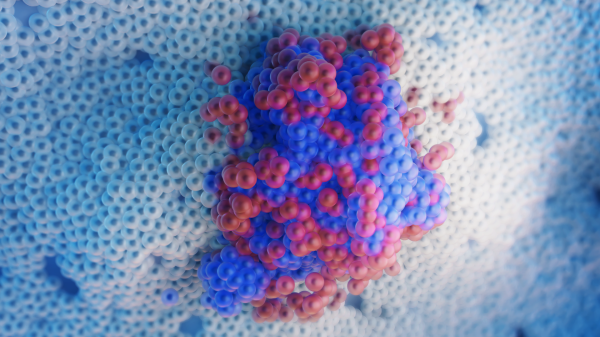ASU researchers bring a new twist to 2D magnets

Left: Top view of two types of orientations of Cr-trihalide bilayer materials. Right: Moiré pattern emerges when two layers are twisted with respect to each other. This creates a moiré field and can lead to skyrmions. Figure adapted with permission from Nano Lett. 2021, 21, 15, 6633-6639. Copyright 2021 American Chemical Society
The discovery of graphene — a single layer of graphite, also known as charcoal — revolutionized our understanding of low-dimensional materials and unraveled their potential for applications in quantum technologies.
We now have a library of 2D materials with outstanding capabilities. Thanks to their weak chemical bonding, it is also possible to combine different types of 2D materials — like 2D Lego bricks — to engineer unique properties.
One of the new editions to the catalog of properties available in 2D materials is magnetism: Utilizing and manipulating magnetism is crucial for quantum applications.
A team of researchers from ASU shows in a recent manuscript published in Nano Letters, titled "Moiré Skyrmions and Chiral Magnetic Phases in Twisted CrX3 (X = I,Br, and Cl) Bilayers," that twisting two-dimensional magnets such as Cr-trihallides can lead to new magnetic phenomena such as skyrmions. Skyrmions are hedgehog-like arrays of magnetic moments with potential applications in memory devices.
“Twisting two-dimensional materials lead to large-scale structures called moiré patterns. Moiré patterns can significantly modify the properties of materials and give rise to new emergent phases,” said Antia Botana, an assistant professor in the Department of Physics. “Skyrmions have been sought after for a long time in 2D magnets. We are excited to show that Cr-based trihalides can be platform to realize them.”
“Employing complementary approaches is crucial to address complex phenomena in varying length scales,” said Onur Erten, an assistant professor in the Department of Physics. “It would not be possible to conduct this project without the combined expertise of both groups.”
Botana and Erten emphasize the key role of the graduate students in this project. This work is supported by National Science Foundation, Division of Materials Research Award No. DMR 1904716.
More Science and technology

ASU and Deca Technologies selected to lead $100M SHIELD USA project to strengthen U.S. semiconductor packaging capabilities
The National Institute of Standards and Technology — part of the U.S. Department of Commerce — announced today that it plans to…

From food crops to cancer clinics: Lessons in extermination resistance
Just as crop-devouring insects evolve to resist pesticides, cancer cells can increase their lethality by developing resistance to…

ASU professor wins NIH Director’s New Innovator Award for research linking gene function to brain structure
Life experiences alter us in many ways, including how we act and our mental and physical health. What we go through can even…